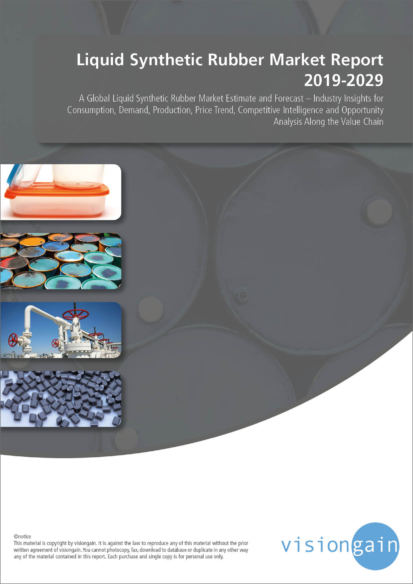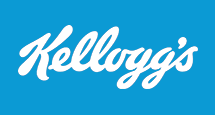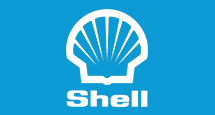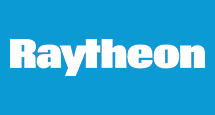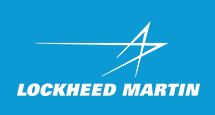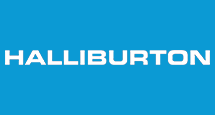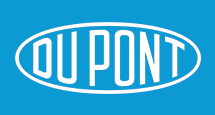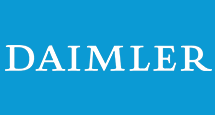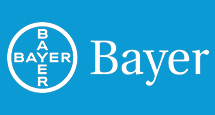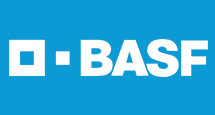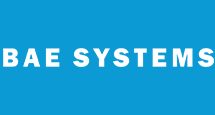Industries > Chemicals > Liquid Synthetic Rubber Market Report 2019-2029
Liquid Synthetic Rubber Market Report 2019-2029
A Global Liquid Synthetic Rubber Market Estimate and Forecast – Industry Insights for Consumption, Demand, Production, Price Trend, Competitive Intelligence and Opportunity Analysis Along the Value Chain
The global liquid synthetic rubber was valued at $3.8 billion in 2018. Liquid synthetic rubber is a polyurethane casting component in the form of liquid that incorporates effective flow properties and flexible rubber. Moreover, liquid synthetic rubber is adopted worldwide for ducting expansion joints, bins castings, linings mouldings, and conveyor belt damaged rubber. The booming demand for liquid synthetic rubber is attributed towards rapid purchasing of automobile by the citizens in various developing countries such as China and India that regardless of high fuel prices are displaying high demand for vehicles.
In the present scenario, price of butadiene (key raw material used in producing liquid synthetic rubber) is increasing at very rapid pace, as it is obtained from petrochemical feedstock and the fluctuations in petrochemical prices have major impact on the final cost of liquid synthetic rubber. Furthermore, the manufacturers are also fortifying a stable supply of feedstock which in turn is expected to develop prospective growth opportunities in the demand for butadiene thereby significantly attributing towards the growth of the global liquid synthetic rubber market.
The synthetic rubber is gaining significant market gains as compared to that of natural rubber and is the key factor driving the growth of the global liquid synthetic rubber market. China is the largest consumer of natural rubber and synthetic rubber, and it has been estimated that approximately 8% of demand for natural rubber is substitutable to synthetic rubber. Natural rubber and synthetic rubber are considered to be highly substitutable and competitive and factors such as low abrasion resistance and end product specifications make synthetic rubber more popular worldwide considerably accentuating the growth of the global liquid synthetic rubber market.
The pervasive demand for tire is thereby escalating the growth of the global liquid synthetic rubber market. Whether the purchase of new tire is undertaken or the existing models are being replaced in the market, the largest consumer for synthetic rubbers are the tire manufacturers. Moreover, implementation of several norms developed by the government authorities and increasing concerns pertaining to the environment are further propelling the demand for liquid synthetic rubber market globally.
The major application of liquid synthetic rubber is in the production of tires and is further mixed with carbon black agent to develop tough and sturdy tires. Besides, liquid synthetic rubber is also used in consumer goods industry such as for the development of erasers, footwear, and sports goods. Additionally, these rubbers are also used in healthcare industry in making contraceptives, surgical gloves, and catheters, which in turn, further drives the growth of the liquid synthetic rubber market globally at considerable rate.
However, volatile prices of raw material are expected to further hinder the growth of the global liquid synthetic rubber market in the near future.
Liquid synthetic rubber market forecast 2019 – 2029 estimates the historical market size in terms of volume as well as revenue generated by the industry players across the globe. It offers the opportunity analysis along the value chain for the liquid synthetic rubber manufacturers. Also, the report offers the vendor analysis along with price trend which provides an edge to the stakeholders especially manufacturers to create a better understanding of the market. End Use players benefit from the product benchmarking and matrix helping them to take right decision in choosing the right product with optimum prices suited for their end use applications.
Based on application, the global liquid synthetic rubber market is categorised into liquid butadiene rubber, liquid isoprene rubber, and liquid styrene butadiene rubber. Among these segments, liquid isoprene rubber is anticipated to generate largest revenue throughout the estimated period owing to increasing utilisation of these rubbers in coatings & sealants domain. Moreover, these rubbers are used in the industry necessitating efficient resilience, low level of water swelling and hot melts.
The liquid synthetic rubber market in North America is anticipated to generate largest revenue throughout the estimated period. The extensive growth of synthetic rubber is attributed towards their adoption from several industry domains such as in construction liquid synthetic rubbers are used in hoses, elevator belts, seismic bearings and tubes. Moreover, employing of durable, elastic and harder quality of rubber used for the manufacturing of aircraft tires, waterproof gaskets and hose pipes are thereby escalating the growth of liquid synthetic rubber market in this region.
Moreover, liquid synthetic rubber market in Asia-Pacific since it is anticipated to witness fastest growth during the forecast period. Increasing adoption of vehicles in the developing countries such as China and India, increasing population and disposable income of the citizens along with favourable policies implemented by the government authorities towards development of automobile components are the key factors pertaining towards the growth of this market. Furthermore, propelling transportation industry in the region that is the largest manufacturer of tires and heightened growth observed from automobile domain in China is thereby bolstering the growth of the liquid synthetic rubber market in the region.
The report also offers the insights for the European, Latin American, and Middle East and African Market. A detail analysis of historic and forecast consumption data, revenue in the market and competitive analysis for major competitors in each region is also provided.
The eminent key players in the global liquid synthetic rubber market are refining their manufacturing efficiencies, enhancing product portfolio and implementing mergers & acquisitions in order to gain competitive edge worldwide. Some of the players having prominent presence in the global liquid synthetic rubber market include Kumho Petrochemical Co., Ltd. (KKPC), TER HELL & Co. GmbH, Synthomer plc, Royal Adhesives & Sealants, Evonik Industries AG, Efremov Synthetic Rubber, Kuraray Co., Ltd., Nippon Soda Co., Ltd., Asahi Kasei, and Puyang Linshi Chemical New Material Co., Ltd.
Visiongain is a trading partner with the US Federal Government
CCR Ref number: KD4R6
Do you have any custom requirements we can help you with? Any need for specific country, geo region, market segment or specific company information? Contact us today, we can discuss your needs and see how we can help: sara.peerun@visiongain.com
Download sample pages
Complete the form below to download your free sample pages for Liquid Synthetic Rubber Market Report 2019-2029
Download sample pages
Complete the form below to download your free sample pages for Liquid Synthetic Rubber Market Report 2019-2029
